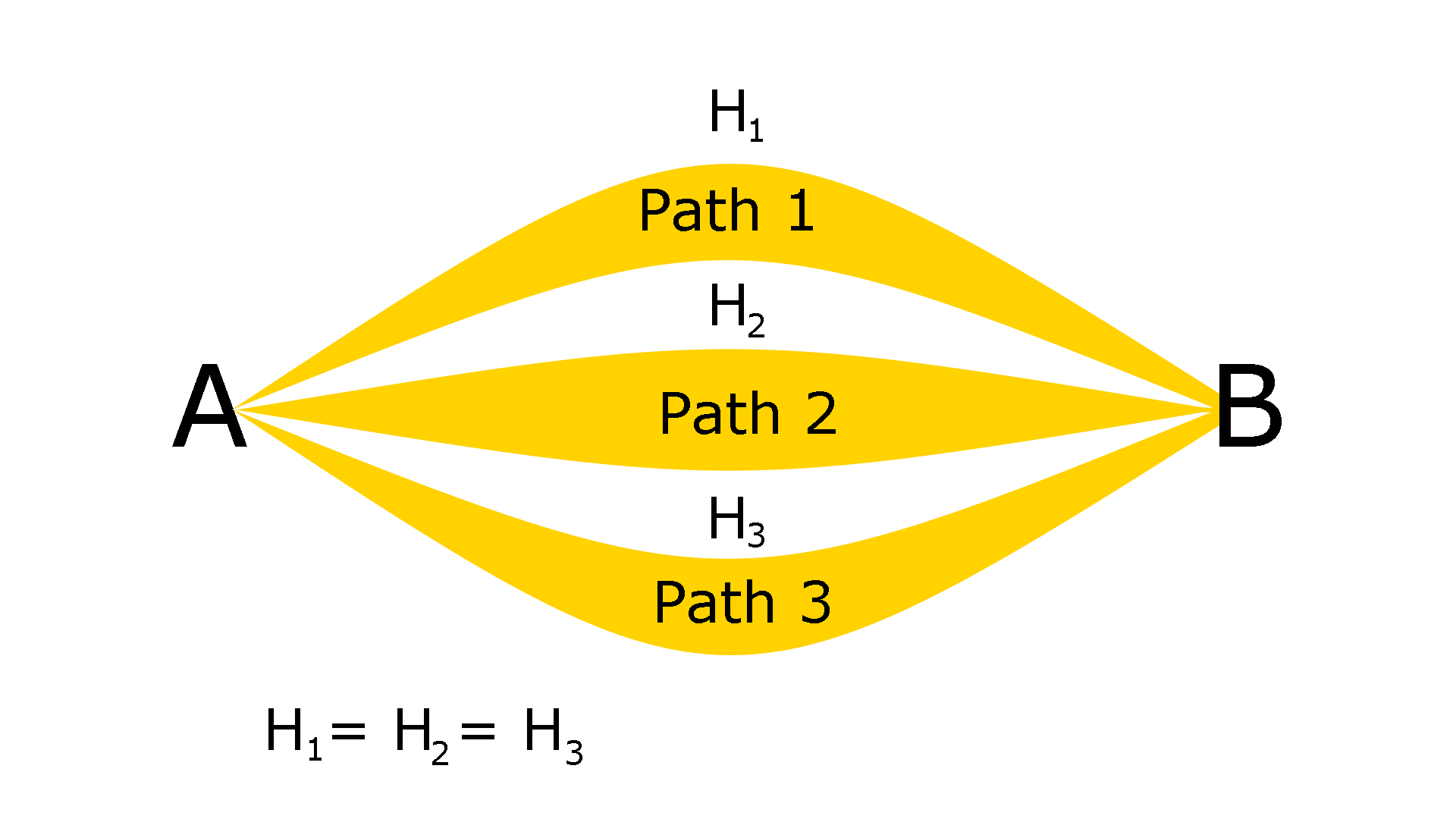
State Hess’s law of constant heat summation and explain it with an example.
Answer
419.6k+ views
Hint: Before attempting this question, prior knowledge of Enthalpy is a must. Enthalpy is a thermodynamic quantity,equal to the sum of internal energy of the system and the product of pressure and volume $(H = U + pV)$.
Complete step by step solution:
Hess’s law of constant heat summation-
According to this law, the change in enthalpy for a reaction is always the same and does not depend on whether the reaction occurs in one step or multiple steps.
OR
The Hess’s law states that the total enthalpy change during a complete chemical reaction is the same regardless of the path taken by the chemical reaction.
OR
This law states that, the change in enthalpy in a chemical reaction, at a constant pressure is not dependent on the process, and only dependent on the initial and final states of the chemical reaction.
It can be more easily understood by the following diagram.

Hess’s law can be seen as an application of the principle of conservation of energy.
As enthalpy only depends upon the initial and final state of the chemical reaction, it is also considered as a state function.
Example:-
Consider the following two routes for preparation of methylene chloride\[(C{H_2}C{l_2})\] from the reaction between methane$(C{H_4})$ and chlorine$(C{l_2})$
Route I:
$C{H_4}(g) + 2C{l_2}(g) \to C{H_2}C{l_2}(g) + 2HCl(g),\Delta H_1^0 = - 202.3kJ$
Route II:
$C{H_4}(g) + C{l_2}(g) \to C{H_3}Cl(g) + HCl(g),\Delta H_2^0 = - 98.3kJ \\
C{H_3}Cl(g) + C{l_2}(g) \to C{H_2}C{l_2}(g) + HCl(g),\Delta H_3^2 = - 104.0kJ \\ $
Adding change in enthalpy of both steps
$C{H_4}(g) + 2C{l_2}(g) \to C{H_2}C{l_2}(g) + 2HCl(g),\Delta H_3^0 = - 202.3kJ$
Thus, it can be clearly seen that no matter what path we follow, the total enthalpy change in the reaction is always the same.
$\Delta H_1^0 = \Delta H_2^0 + \Delta H_3^2 = - 202.3kJ$
Note: Hess’s law is named after Germain Hess, a Russian chemist who was born in Switzerland. Germain’s Hess’s law of constant heat summation was published in 1840, which is before 1850, when Rudolf Clausius proposed the first law of thermodynamics.
Complete step by step solution:
Hess’s law of constant heat summation-
According to this law, the change in enthalpy for a reaction is always the same and does not depend on whether the reaction occurs in one step or multiple steps.
OR
The Hess’s law states that the total enthalpy change during a complete chemical reaction is the same regardless of the path taken by the chemical reaction.
OR
This law states that, the change in enthalpy in a chemical reaction, at a constant pressure is not dependent on the process, and only dependent on the initial and final states of the chemical reaction.
It can be more easily understood by the following diagram.

Hess’s law can be seen as an application of the principle of conservation of energy.
As enthalpy only depends upon the initial and final state of the chemical reaction, it is also considered as a state function.
Example:-
Consider the following two routes for preparation of methylene chloride\[(C{H_2}C{l_2})\] from the reaction between methane$(C{H_4})$ and chlorine$(C{l_2})$
Route I:
$C{H_4}(g) + 2C{l_2}(g) \to C{H_2}C{l_2}(g) + 2HCl(g),\Delta H_1^0 = - 202.3kJ$
Route II:
$C{H_4}(g) + C{l_2}(g) \to C{H_3}Cl(g) + HCl(g),\Delta H_2^0 = - 98.3kJ \\
C{H_3}Cl(g) + C{l_2}(g) \to C{H_2}C{l_2}(g) + HCl(g),\Delta H_3^2 = - 104.0kJ \\ $
Adding change in enthalpy of both steps
$C{H_4}(g) + 2C{l_2}(g) \to C{H_2}C{l_2}(g) + 2HCl(g),\Delta H_3^0 = - 202.3kJ$
Thus, it can be clearly seen that no matter what path we follow, the total enthalpy change in the reaction is always the same.
$\Delta H_1^0 = \Delta H_2^0 + \Delta H_3^2 = - 202.3kJ$
Note: Hess’s law is named after Germain Hess, a Russian chemist who was born in Switzerland. Germain’s Hess’s law of constant heat summation was published in 1840, which is before 1850, when Rudolf Clausius proposed the first law of thermodynamics.
Recently Updated Pages
Master Class 11 Accountancy: Engaging Questions & Answers for Success

Glucose when reduced with HI and red Phosphorus gives class 11 chemistry CBSE

The highest possible oxidation states of Uranium and class 11 chemistry CBSE

Find the value of x if the mode of the following data class 11 maths CBSE

Which of the following can be used in the Friedel Crafts class 11 chemistry CBSE

A sphere of mass 40 kg is attracted by a second sphere class 11 physics CBSE

Trending doubts
10 examples of friction in our daily life

One Metric ton is equal to kg A 10000 B 1000 C 100 class 11 physics CBSE

Difference Between Prokaryotic Cells and Eukaryotic Cells

State and prove Bernoullis theorem class 11 physics CBSE

What organs are located on the left side of your body class 11 biology CBSE

Write down 5 differences between Ntype and Ptype s class 11 physics CBSE




